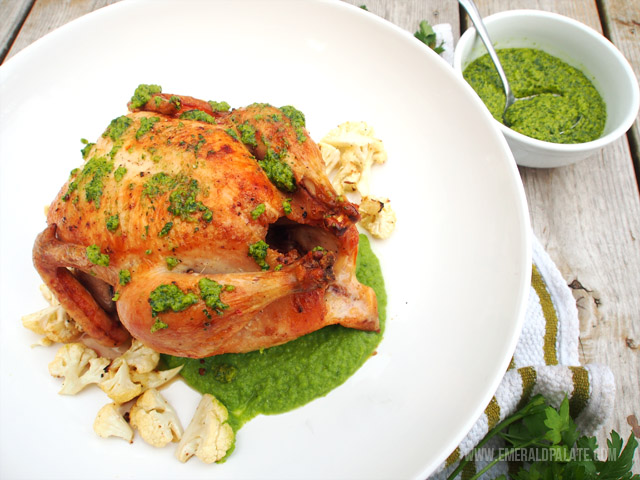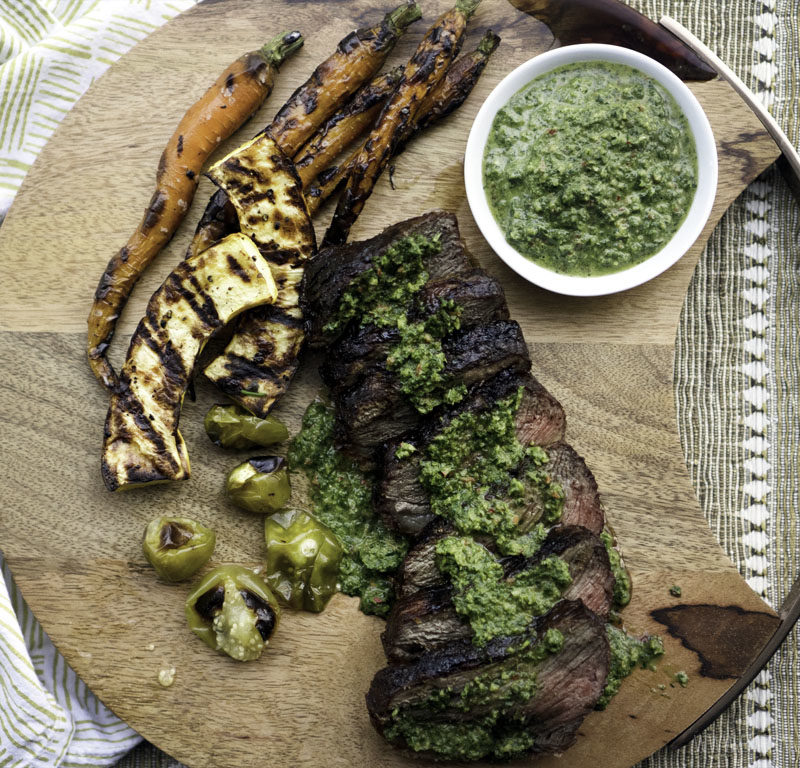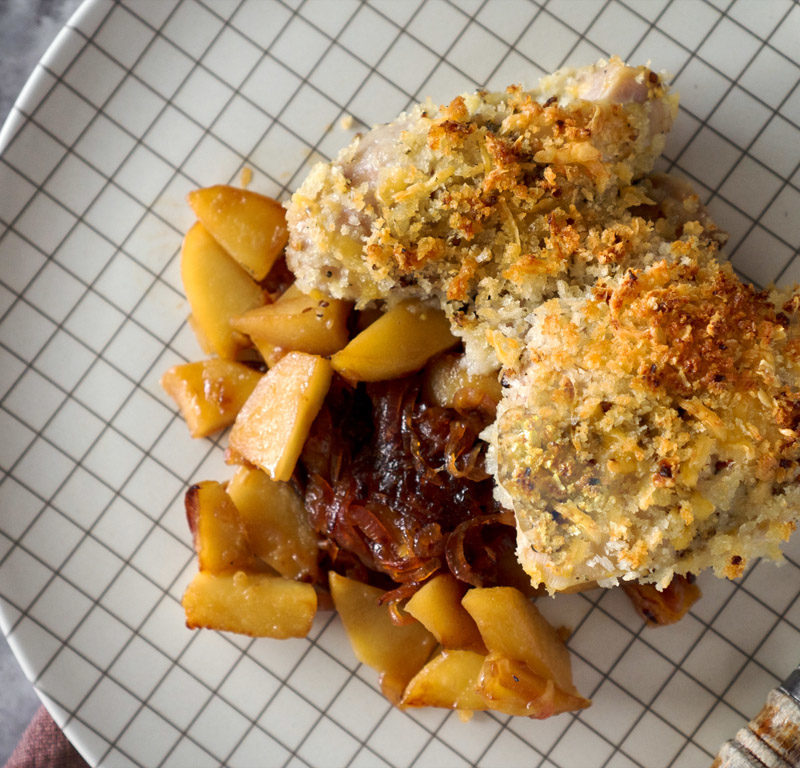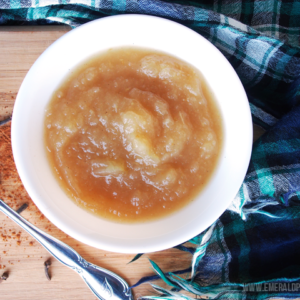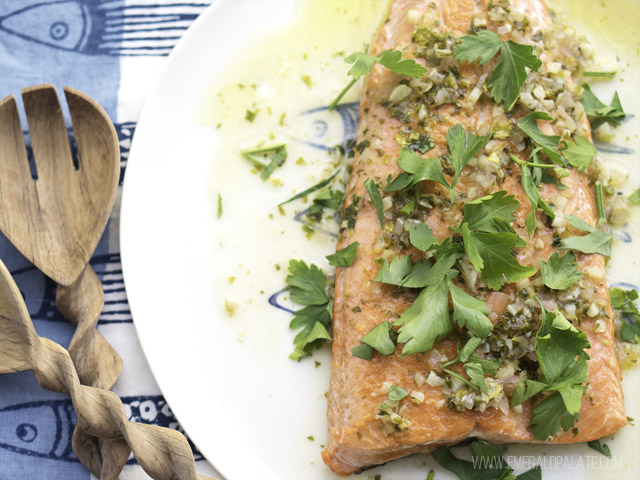
Lemon and butter served with salmon isn’t all that revolutionary. But ladies and gentlemen, I found a new ingredient that ups the sex appeal of this dish: limoncello. This recipe is my take on a salmon scampi, using an easy limoncello sauce to create a sweet, acidic, and full-bodied flavor, which goes perfectly with fattier fish like salmon.
Salmon Scampi Recipe With a To-Die-For Limoncello Sauce
What do you think of when you think of “limoncello”?
Is it a fluorescent yellow liqueur that your Italian dad likes to sip (that’s not just me, right?)? If so, that was me. And I never thought of cooking with it for fear that it’d turn my dishes acidic yellow or cloyingly sweet.
But I discovered a limoncello that blew my mind. Up until this point, I didn’t like limoncello. But things changed for the better when I was invited to a distillery tour at Letterpress Distilling in SODO, a neighborhood in south Seattle.
Letterpress Distilling doesn’t make limoncello like other brands. Rather then adding dyes or acid to make it tart, Letterpress’ limoncello is what owner Skip Tognetti calls “100% grain-to-glass”. They make everything from scratch with almost 100% Washington-grown ingredients (the one import: lemons!). It results in an end product that’s smooth and sweet, with a full-bodied finish.
People tend to think limoncello should be tart, so they add citric acid. But it should taste like lemons and that’s it.”
So how does Letterpress make better-tasting limoncello?
You can read my full interview with the best limoncello distiller, but here are the cliff notes. They start by distilling their own vodka. We had the opportunity to try it, and I was pleasantly surprised it had sweet, vanilla notes and a much more complex flavor than your typical, burn-y, bland vodka that “doesn’t taste like anything” (except your throat being cut by razor blades on the way down).
Once they finish the vodka-distilling process, they add organic lemons. Skip and his team (three in total!) zest all the lemons by hand using a hand-crank tool. The lemon zest sits in the vodka for more than five weeks, uninterrupted except for a daily swirl. Letterpress goes through about 130 lemons per batch and each bottle ends up having about four lemons in it.
Once they have their limoncello base, the secret is to add local blackberry honey. This is the secret ingredient that makes Letterpress’ limoncello subtly sweet and thicker. You can tell that this isn’t processed because it has a light, yellow versus neon yellow hue.
Obviously Letterpress Distilling’s limoncello is perfect for sipping. But during the tour Skip explained how him and his wife make food with their limoncello. One example he gave was shortbread with limoncello icing. Another example, risotto. The applications seemed endless, so I wanted to see how I could apply this to a savory dish.
What does this salmon scampi and limoncello sauce taste like?
Lemon is used in so many dishes. Pestos, soup, chicken, fish. Wine is also a great addition to most savory dishes; it’s just another way to add acid. These facts got me thinking: what if I put the two together? The output was a limoncello sauce that immediately reminded me of shrimp scampi.
But I didn’t just want to recreate scampi because, well, that would be boring. So I started thinking of variations and landed on this salmon scampi recipe. And hot damn was I happy with the result. Because Letterpress Distilling uses honey, their limoncello thickens the sauce and adds a subtle, rich, and sweet flavor unlike I’ve had in any scampi recipe. It makes the flavor more substantial, which pairs nicely with add-ins like shallots, garlic, and parsley.
I was pretty obsessed with this limoncello sauce. So the directions below provide a hefty portion you can slop onto the salmon. I encourage you to serve it with another side dish that would assimilate to the flavor of the sauce as it picks up any drips. I chose roasted potatoes, but it would also go fabulously with roast cauliflower, pasta, or sautéed kale.
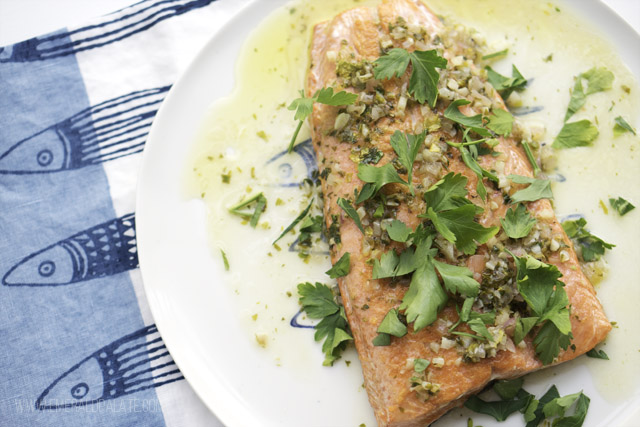
The Salmon Scampi With Limoncello Sauce Recipe:
Serves 4 | Active 30 minutes | 30 minutes total
Ingredients:
- 8 Tbsp. unsalted butter
- 6 cloves garlic, minced
- 4 shallots (~2 Tbsp), minced
- 2 tsp. Dijon mustard
- 2/3 C limoncello* (I highly recommend Letterpress Distilling)
- 1/3 C lemon juice
- 4 Tbsp. parsley, minced
- 1 tsp. lemon zest
- 1 Tbsp. vegetable oil
- 4, 6-oz. salmon fillets
* Note: You likely won’t be able to recreate this flavor with traditionally-processed limoncellos that use food dyes, as they tend to be too acidic. So look for limoncellos like Letterpress Distilling that aren’t neon yellow and are all natural. If your limoncello tastes sweet, reduce the amount of limoncello to 1/3 C and use 2/3 C lemon juice.
Directions:
- Melt 6 Tbsp. butter over medium heat in nonstick skillet. Then add shallots and cook until soft and butter bubbles, 3 minutes.
- Add the garlic and cook until fragrant, 1 minute.
- Add the mustard, salt, and pepper and stir to incorporate. Let simmer until bubbles, 2 minutes.
- Add the limoncello and lemon juice. Stir to incorporate. Let simmer until it begins to thicken, 3-5 minutes.
- Cut remaining 2 Tbsp. of cold butter into cubes. Add them one at a time to the sauce, stirring to thicken.
- Add minced parsley and lemon zest. Remove from heat and set aside.
- In a separate skilled, add the vegetable oil and heat over medium to medium/high heat. Once hot, add the salmon skin-side down and cook undisturbed for 3 minutes.
- Flip the salmon and cook for another 2 minutes.
- Plate the salmon and spoon the lemony garlic limoncello sauce over the fish. Garnish with more parsley.
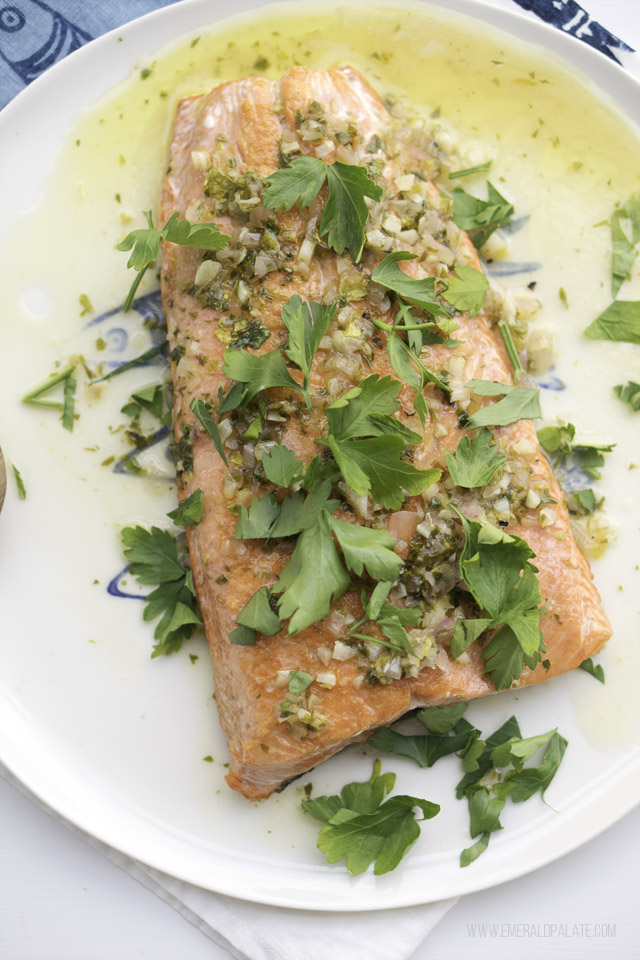
Looking for other recipes?
Why not try one of these recipes that also include lemon-y flavors or salmon?
- A lemon-y chicken saltimbocca recipe
- Stuffed shells with smoked salmon
- Salmon with a pistachio-cacao gremolata and fennel
- Fish with Mango Tomatillo Salsa
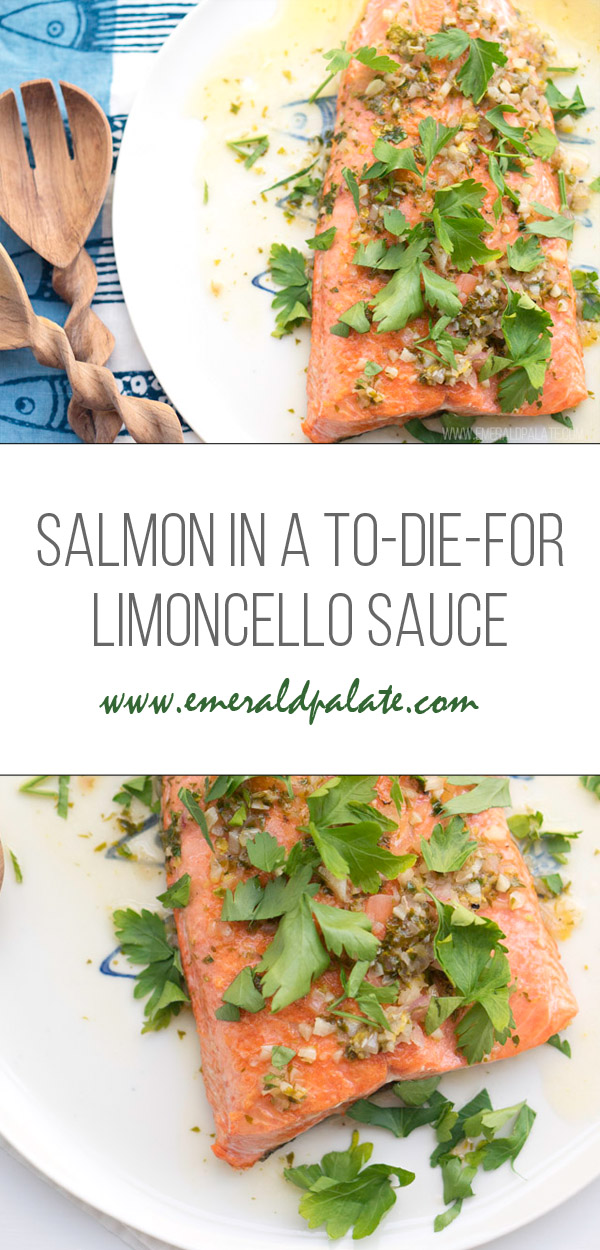
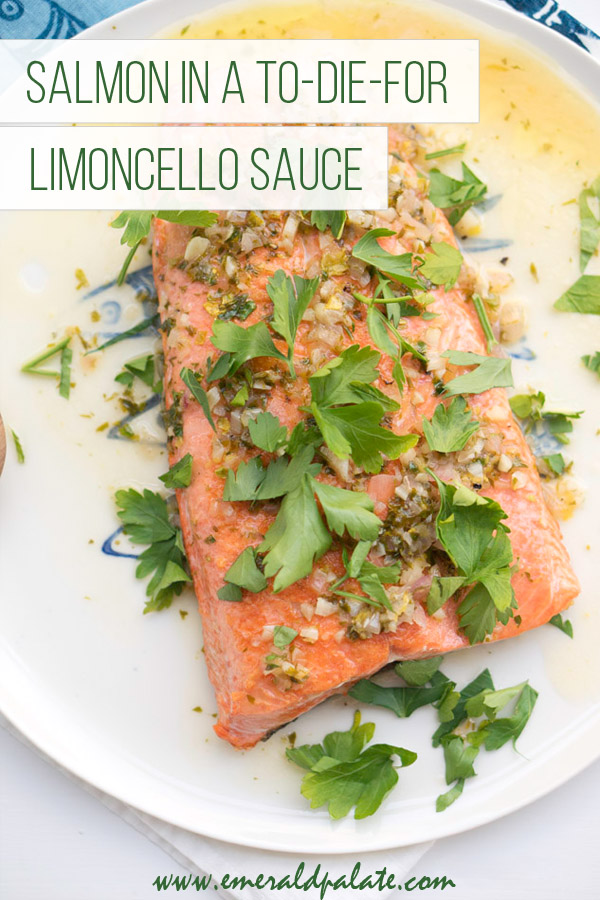
Disclaimer: Letterpress Distilling offered us a free tour and samples of their alcohol. However, they did not require us to write this article or provide payment. All opinions are my own.
